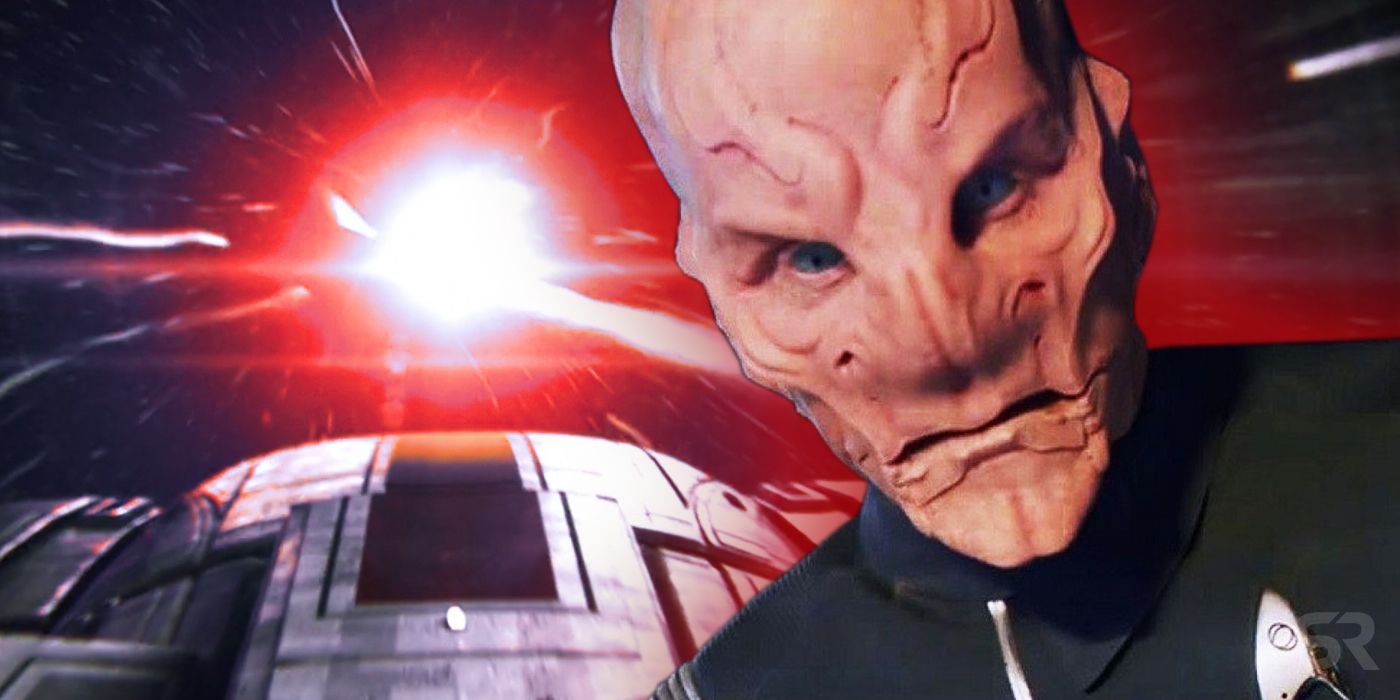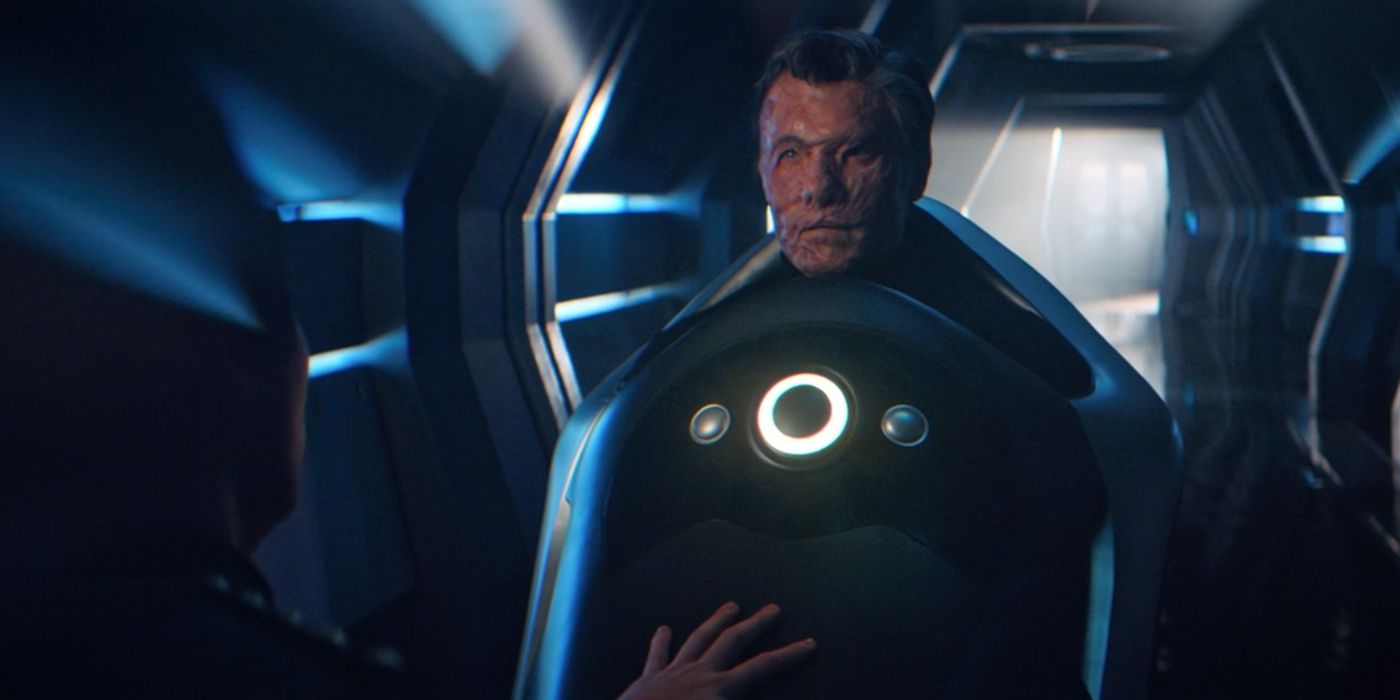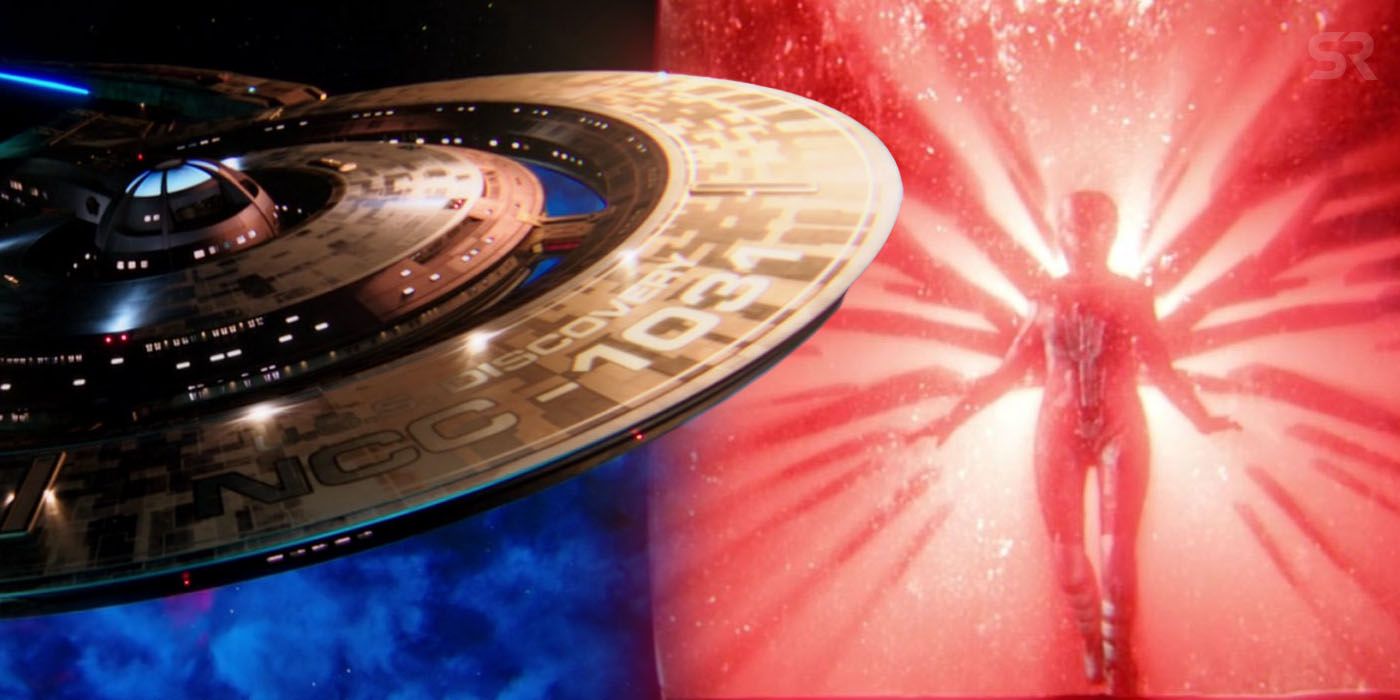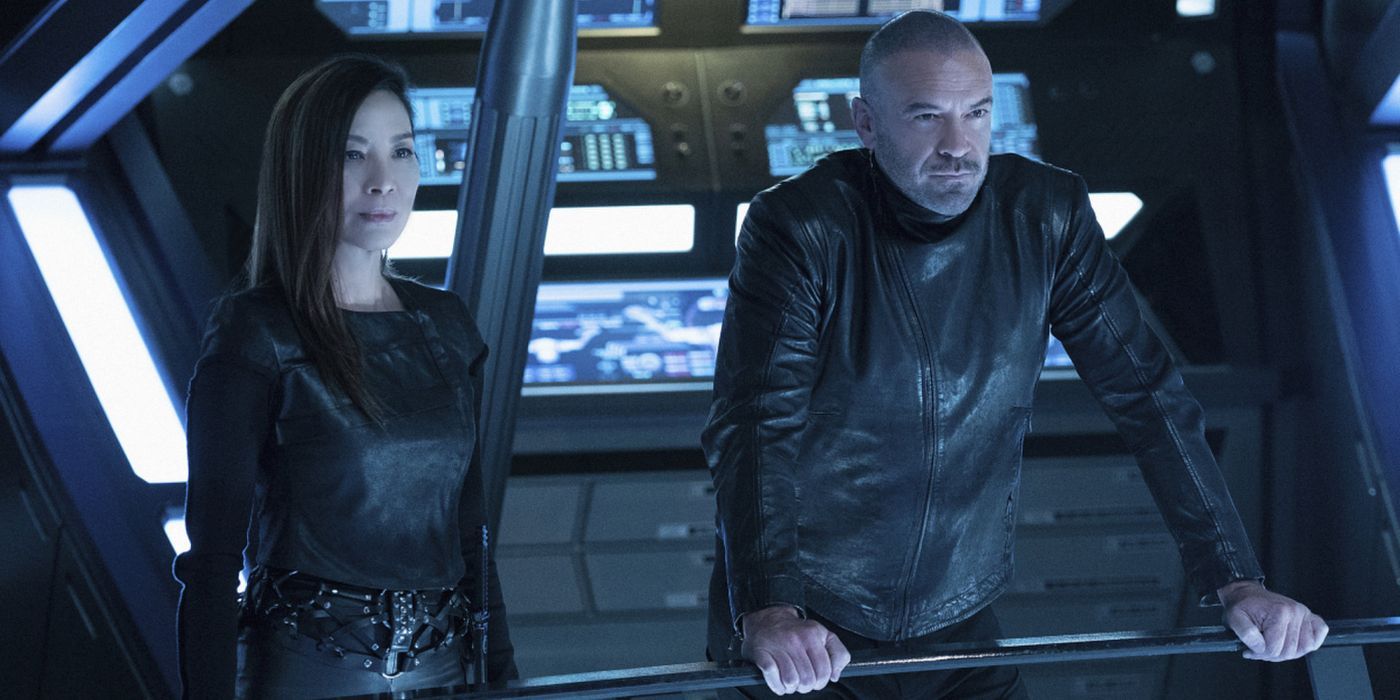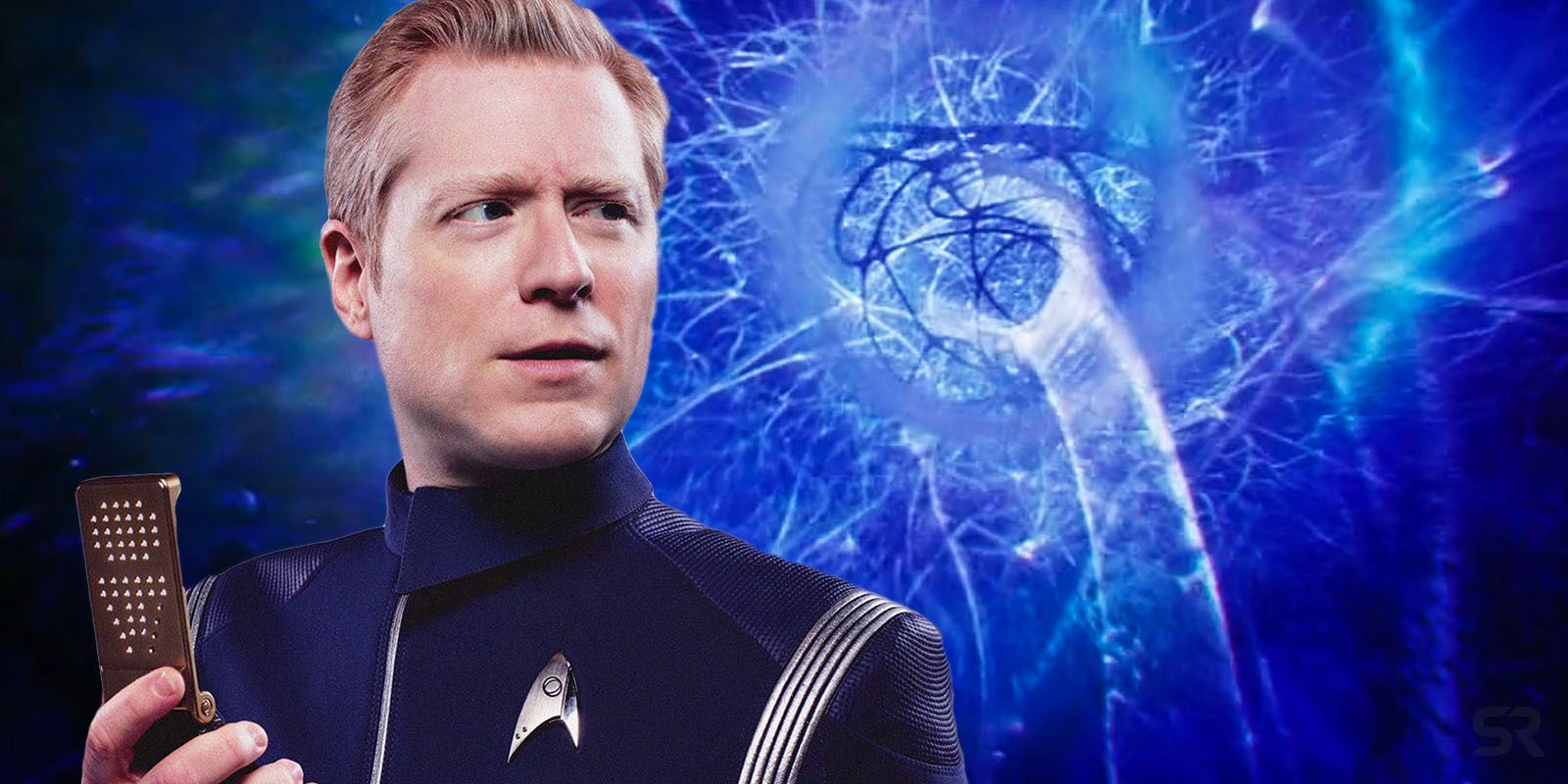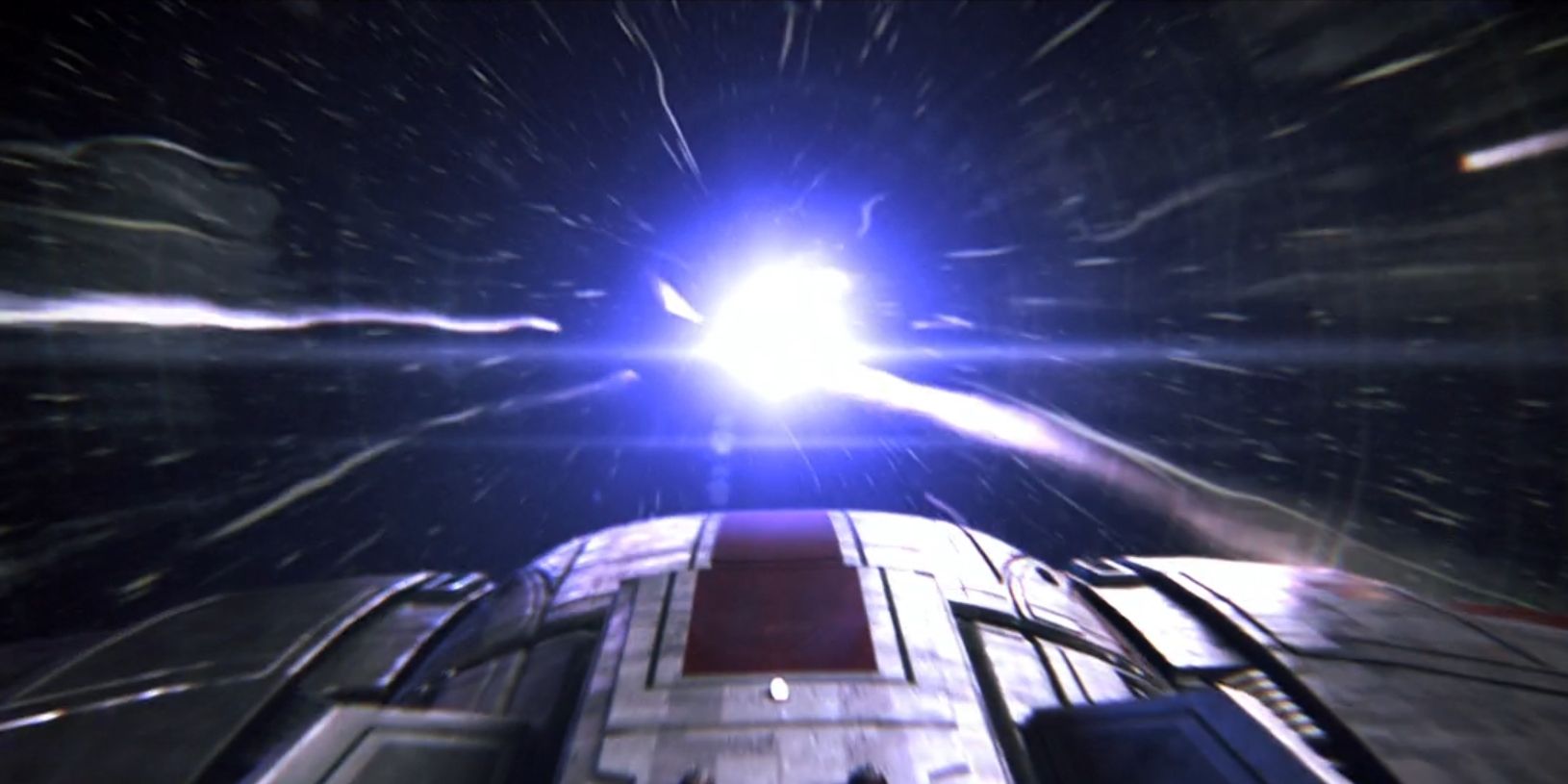Star Trek: Discovery season 3 may be preparing to boldly go somewhere the franchise has been avoiding for awhile - its own future. After the debut season focused on the Klingon War and the Mirror Universe, Star Trek: Discovery season 2 has largely hinged on time travel, to a degree that's essentially unprecedented in previous Star Trek stories. The mysterious Red Angel - eventually revealed to be Michael Burnham's long-thought-dead mother - has been bouncing around the timeline in an attempt to stop Control - Section 31's rogue A.I. that shares some striking similarities to the Borg - from destroying all life in the galaxy.
We don't yet know how the battle between Control and humanity will play out, but it's becoming clear that Discovery's third season is going to be something different. Per SyFy, the cast and crew of the show hinted that the season finale is going to be a game changer. Doug Jones, who plays Commander Saru, said the script for the finale made his jaw drop, and followed that up by saying “I think the fans can expect to boldly go where no Star Trek series has ever gone before.”
Related: Star Trek Theory: Discovery Season 2 Is The Borg's Origin
Similarly, producer Alex Kurtzman says the show is soon going to answer many of the continuity questions that have plagued Discovery from the very beginning, and again hinted at a major shift in the show's status quo.
All of this cryptic hype may be hinting at an unprecedented change for the show's third season - a one way trip into the far future. How could this possibly happen? Let's take a look at how Star Trek: Discovery season 3 could be completely different.
- This Page: All The Very Specific Star Trek: Discovery Evidence Of Time Travel
- Page 2: Star Trek: Discovery Season 3 Is Set In The Future
The Discovery Now Has The Ability To Time Travel
One of Star Trek: Discovery's biggest additions to the franchise's mythos has been the time crystal. You no longer have to whip around the sun or follow a Borg sphere to get to the past, you just need a time crystal and the right kind of technology to harness its power. A modified time crystal was first featured in the season 1 standout episode "Magic To Make The Sanest Man Go Mad," which saw Harry Mudd use time travel for his own nefarious purposes. In season 2, Dr. Gabrielle Burnham utilized a time crystal in her development of a suit that could be used for time travel for Section 31. Dr. Burnham was forced to use the suit when the Klingons attacked her family, and she found herself tethered to a point 950 years in her relative future. Control managed to destroy the crystal and send Dr. Burnham and the Red Angel suit into the time stream, their ultimate destination unknown.
Related: Star Trek: Discovery's Red Angel Reveal Was a Good Twist (But Poorly Executed)
In the latest Star Trek: Discovery episode, "Through The Valley Of Shadows," Captain Pike travels to the Klingon world of Boreth, where a heavily protected monastery houses dozens of time crystals. Before he's allowed to take one, Pike is forced to look into his own future, where he gets a glimpse of the gruesome fate that awaits him - he becomes an unrecognizable invalid after an accident on a training vessel, as revealed in The Original Series classic episode "The Menagerie."
Pike obtained the time crystal as part of the Discovery's latest plan to thwart Control by sending the sphere data into the far future, but as the episode ended, the ship was staring down over thirty Section 31 vessels intent on getting that information. Even under ideal circumstances, time crystals are volatile technology, and there's no guarantee the Discovery's plan would go off without a hitch, even with what looks to be an assist from the repaired Enterprise.
Discovery's Crew Know How the Red Angel Suit Works
The mystery of the Red Angel has largely been solved, as we know it was Dr. Burnham attempting to change the future so that Control wouldn't obliterate the galaxy. The crew of the Discovery also know the suit will only work for Dr. Burnham, or someone with near identical DNA, like her daughter.
It seems likely that Dr. Burnham will eventually find a way to get herself and the suit back to Discovery's relative present, and the Red Angel tech will play a role in Control's downfall. How exactly that turns out is anyone's guess, but it's likely a safe bet that victory will come at a cost for both Burnhams.
Related: Discovery’s Michael Burnham Obsession Is Hurting Star Trek Canon
Discovery is Desperate to Keep the Sphere Data From Control
The sphere data - a vast archive of universal knowledge bequeathed to the Discovery by a dying entity - contains the key to Control's galactic conquest. It's not hard to figure out why - a malevolent artificial intelligence could likely utilize such a vast resource as the sphere data to inflict devastation on a universal scale. The Discovery crew have attempted to delete the archive, but found it to be encrypted by a code they will never be able to crack. And so the Discovery itself has turned into this season's MacGuffin, with "Through The Valley Of Shadows" flirting with the idea of destroying the ship to thwart Control.
Related: Star Trek Theory: [SPOILER] is Discovery's Final Captain
It seems highly unlikely the Discovery is going to meet its end on a show called Star Trek: Discovery, but the crew is running out of viable solutions to keep the sphere data away from Control.
Page 2 of 2: Star Trek: Discovery Season 3 Is Set In The Future
Theory: Discovery Incorporates the Time Crystal Into the Spore Drive
So how can Discovery possibly keep the sphere data away from Control? The crew's current plan was to send the sphere data into the far future where Control could never get to it, but the specifics of that plan are still sketchy. It might make sense to pair it with the show's other massive leap forward in previously unheard of Star Trek technology - the spore drive. The spore drive was used during season 1 to bounce the Discovery in and out of war zones in the blink of an eye, the Federation's most potent weapon against the Klingons. It eventually malfunctioned and sent the Discovery hurtling into the Mirror Universe, where it traded in the treacherous Captain Gabriel Lorca for the equally treacherous Emperor Philippa Georgiou.
Combining the technology of the spore drive and the time crystals makes a certain amount of sense - they're both on the mystical end of Star Trek tech, and neither was mentioned in any previous iteration of Star Trek, a surprising omission considering Discovery precedes all Star Trek series other than Enterprise. How could everyone have just forgotten about two such potent technologies?
Related: Star Trek: Discovery's Burnham Story Homages DS9's "The Visitor"
Star Trek: Discovery Could Jump Far Forward in Time For Season 3
It's easy to imagine Starfleet washing their hands of both the spore drive and time crystal technology if the Discovery - the first Starfleet ship to use either - was presumed lost due to complications with that technology. What if, in its attempts to keep the sphere data away from Control, the Discovery ends up time traveling itself hundreds of years in the future - perhaps even past Dr. Burnham's tether point - with no way of returning? To residents of the 23rd century, it would appear as if the Discovery and its crew sacrificed themselves to protect all of existence, and it wouldn't be much of a leap to see the Federation outlaw the use of both the spore drive and time crystals as simply being too dangerous.
Leaving the Discovery stranded in the future would solve many of the show's lingering problems. Since its very first episode, it's been hindered by fairly standard prequelitis issues, with Michael Burnham bearing the brunt of it; it still seems unthinkable we could have never heard of Spock's adopted human sister. But throwing the ship into the future would explain why Burnham isn't a pivotal figure in Federation history, and the temporal fallout from Dr. Burnham's missions and a spore jump into the future could conceivably rewrite Michael's personal history, maybe even making it so she was raised by her own mother instead of Sarek and Amanda.
Related: Star Trek: Discovery Is Close To Repeating The Mistakes Of Season 1
It would also, finally, move the Star Trek franchise forward. Beginning with J.J. Abrams' 2009 film reboot, all recent iterations of Star Trek have toiled in the franchise's past, either with alternate reality stories on the big screen, or the Discovery's adventures on the small screen, which predate TOS by about a decade. The upcoming Picard series was the first project to promise a look at Star Trek's relative future; it'll take place years after Star Trek: Nemesis, which is still the story that takes place the furthest into Star Trek's future, in the late 24th century.
But Star Trek: Discovery has the chance to do something even more ambitious, by potentially transporting the ship hundreds of years into the future, far past the era of The Next Generation, Deep Space Nine, and Voyager. Does the Federation even still exist that far into the future? The storytelling possibilities are essentially limitless.
Make no mistake, this would be a massive shift in Star Trek: Discovery's M.O. The show would change in ways that are almost too numerous to list on a very fundamental level. But say what you will of Discovery, it's never been a show that was afraid to swing for the fences. Pushing the show into Star Trek's far future really would take Star Trek: Discovery where no one has gone before.
Next: Star Trek Movies & TV: What The Franchise's Future Looks Like

